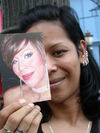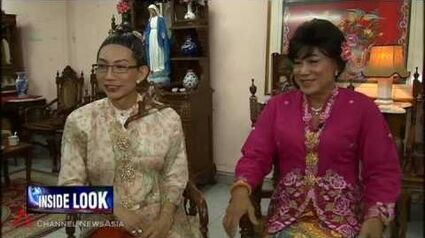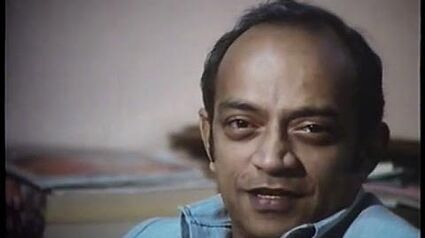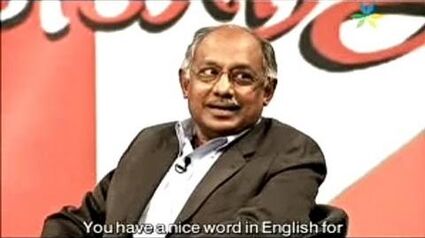The pre-British era

Cover of a novel telling the ancient story of a sexually fluid Javanese princess, Galuh Candra Kirana, who cross-dresses to become the warrior prince, Panji Semirang.
The Hikayat Panji Semirang (Tale of Prince Semirang), an epic poem which dates from the 14th century and tells of the adventures of a sexually fluid hero, Panji Semirang, was well known and beloved throughout South-East Asia, especially in Indonesia and Malaysia.

A modern-day Singaporean mak nyah.
"Third gender" or transgender individuals, who are called "mak nyah", have their own niche in traditional Malay society which acknowledged the existence of alternatives to heterosexual practices. They were recognised, tolerated and even incorporated into community life, occupying a stable, albeit marginalised position within society. This situation is similar to the traditional cultures of the larger Austronesian and Malayo-Polynesian region and is also seen in the bissu, calabai and calalai of the Bugis in Indonesia's South Sulawesi province, the fa'afafine of Samoa, the fakafefine or fakaleiti of Tonga, the whakawahine of the Maoris, the akava'ine of the Cook Islands Maoris and the mahu of Hawaii.
Cross-dressing in Peranakan plays
In Peranakan or Baba culture, male-to-female cross-dressing was often indulged in for fun or for performances, especially stage plays as women were traditionally not allowed to take part. It enjoyed community support and was not frowned upon[1],[2],[3],[4],[5]. William Tan Wee Liam was a pioneer Peranakan actor, playwright, director and producer, well known for playing female roles during the 1950s and 60s. Vestiges of this tradition continue to this very day in the theatrical productions of the Gunong Sayang Association[6] and Peranakan Siblings (see main article: Singapore gay theatre).
National Service
National service was implemented in 1967, whereby all 18-year old males were required to train full-time for two or two-and-a-half years, depending on their educational attainment. Transgender was listed as a condition in a Singapore Armed Forces (SAF) 'Directory of Diseases' and recruits who outed themselves to the examining doctors at the Central Manpower Base (CMPB) at Dempsey Road had their 'deployability' denied in sensitive positions. They were classified as snigger-worthy Category 302 personnel, downgraded to a Public Employment Status of 3 (PES3) and assigned only clerical work at army bases.
Early sex reassignment surgery
- Main article: Sex reassignment surgery in Singapore
As Singaporean gynaecological surgeons became more skillful, leaders in the field like Prof. S Shan Ratnam were authorised to perform male-to-female sex reassignment surgery (SRS) at Kandang Kerbau Hospital. He later trained other surgeons like Assoc. Prof. Arunachalam Ilancheran and Dr. C Ananda Kumar to undertake the procedure. The first such operation in Asia took place here in July 1971. However, before patients could go under the knife, they first had to subject themselves to an exhaustive battery of tests and be given a clean psychological bill of health by chief academic psychiatrist Prof. Tsoi Wing Foo.
Straits Times reporter Chua Meng Choo provided an exhaustive account of the first sex-change surgery done in 1971[8]:
"The first sex change surgery in Singapore was successfully performed on 30 July 1971 at the Kandang Kerbau Hospital. The operation involved a 24-year-old man and was the first procedure of its kind performed in Singapore and in Asia. There had been previous “sex change” operations performed in Singapore, but these mostly involved patients who had both male and female genitalia (hermaphrodites) and the removal of one set of genitalia. The 1971 operation was regarded as a first because it involved a surgical conversion aimed at functionally changing a person’s sex.
Patient and diagnosis
The patient was a 24-year-old Singaporean citizen of Chinese heritage. Her name was kept secret, but her background was later made public in a book. The eldest son in a family of five with two younger sisters, her father was a dentist who was often physically violent with his wife, which caused the patient psychological trauma. As a child, the patient was raised by her grandmother, who dressed her as a female. In her teenage years, she associated with other cross-dressers before frequenting the transsexual and transvestite scene at Bugis Street as an adult.
From the age of 16, she worked as a sales assistant, a housemaid, in a bank and as a public relations officer. She later won second prize in a beauty contest and became a model. While working as a part-time model, she joined a cabaret and was known as “Mama Chan”. She also ran a social escort service.
Having lived as a woman for some time, she first consulted Professor S. S. Ratnam, a senior lecturer in the University of Singapore’s Department of Obstetrics and Gynaecology, in 1969. She had been suffering sexual and emotional problems, which had led to two suicide attempts. Ratnam explained to her that he had no experience in sex change surgery, but she continued to visit his clinic weekly. After researching the subject of transsexualism and sex reassignment surgeries, Ratnam familiarised himself with the surgical techniques by practising on cadavers.
The patient underwent a psychological analysis by a team of psychiatrists who confirmed that she was a transsexual who required surgery. A diagnosis of transsexualism requires that the patient possesses a continuous sense of inappropriateness about his or her anatomic sex, a desire to discard his or her genitalia and live as a member of the opposite sex, and the absence of physical intersex symptoms or genetic abnormalities. As well, his or her gender confusion (gender dysphoria) must not be caused by other disorders such as schizophrenia. The patient was also cautioned that the surgery would be irreversible, potentially involved a number of complications and required a prolonged follow-up period.
Legal clearance for the operation was then sought from the Ministry of Health and granted. After consideration of the patient’s psychological profile, the medical expertise involved and the approval of the Ministry, the decision was taken to proceed with the operation.
Operation and impact
The operation was performed by Ratnam and two other surgeons from the University of Singapore’s Department of Obstetrics and Gynaecology, Associate Professor Khew Khoon Shin and plastic surgeon R. Sundarason. Photography of the operation was not permitted. Ratnam later described the three-hour operation as a success, with an uneventful post-surgery recovery. He later founded the Gender Identity Clinic specialising in sex change surgeries at the National University Hospital.
After her successful operation, the patient went on hormone treatments and was functionally a woman, with the exception of being unable to conceive or menstruate. She later married a French man and owned a travel agency in Paris, before moving to England.
The July 1971 operation paved the way for sex change surgeries in Singapore and in the region. Singapore’s first sex change operation on a woman took place three years later, between August 1974 to October 1977 (female-to-male conversions are a more complex process and involve several surgical stages). In the 1970s and 1980s, hospitals in Singapore accepted numerous sex change patients from other Southeast Asian countries, with foreigners making up around half of all surgeries performed."
Documentary
In a groundbreaking and extremely graphic documentary entitled "Shocking Asia" produced in 1974, transgender women in Singapore revealed the most intimate details about their lives and sex reassignment surgery done by pioneering surgeon, Prof. S Shan Ratnam who also granted an exclusive interview. The operation itself was shown in great detail[9]:
Increasing visibility in mainstream media
The first substantial mention of Singapore's transgender community was a groundbreaking 4-part feature by The New Nation entitled, "They are different..." It was published on 4 consecutive days from Monday, 24 July to Thursday, 27 July 1972 (see main article Singapore's first newspaper articles on the LGBT community).
In the 1970s, two well known transsexual models were occasionally featured in Her World magazine. The first was Shonna, the first Singaporean to undergo a sex change operation in 1971 (see main article: Sex reassignment surgery in Singapore). Another was named Christine. Both emigrated out of Singapore several years later. Iconic transgender model Amy Tashiana was too overbooked with appointments to accept the projects.
Legal reform
National Registration Identity Cards
In the years following Singapore's first sex reassignment operations, a number of legal issues arose for transgender individuals who had undergone a sex change. In 1973, Singapore legalised sex reassignment surgery.
In a move which saw Singapore rise to be one of the world leaders in transgender rights, the Government instituted a policy directive at the National Registration Department to enable post-operative transgender people to change the legal gender stated on their national registration identity cards (NRIC) (but not their birth certificates) and other documents which flowed from that, such as their passports. It was hitherto unknown to the LGBT community and general public what prompted the highly conservative People's Action Party to do this.
It was not until 2012 that pioneering sex reassignment surgeon, Prof. Shan S Ratnam's protege, Assoc. Prof. Arunachalam Ilancheran, revealed during a television discussion forum on thirunangai, or Tamil transgender women that it was due to the efforts of Ratnam who lobbied the Government quietly behind the scenes to achieve this groundbreaking right for his patients on compassionate grounds[10]:
To change one's name and gender stated on one's identity card, one requires:
- a deed poll
- passport-sized photos
- a letter of certification of sex-reassignment surgery (SRS)
The deed poll is a legal document which must be prepared by a lawyer. The cost ranges from SGD$60 to $100. There are many lawyers who will do this and a popular site which lists them is www.deedpoll.sg. Other lawyers may provide higher or lower rates so if one is really strapped for cash, one can consider cheaper options.
After obtaining the deed poll, one must go down to the Immigration and Checkpoints Authority (ICA) building currently located next to Lavender MRT station. There, one must go to the NRIC (Identity card) level and approach the counter. One must tell the staff that one is there to change one's name. After queueing up, the new identity card should be ready within the hour.
There are stiff penalties in Singapore for providing false information on the NRIC. So if one is unfortunate enough to receive a new card with incorrect information on it, the onus is on oneself to point out the mistake. Of course, you can also accept the mistake at one's own risk. One may regard it as fortunate to have one's sex changed on one's IC without the SRS letter of certification.
Marriage certificates
The Registry of Marriages implicitly recognised marriages involving a sex change patient, as it required only an identity card to prove the different genders of the couple. There was no specific provision in the statutes which allowed the Registrar to do this, so it existed probably only at the level of a policy directive. However, for over 20 years, this policy seemed to have operated smoothly.
However in 1991, a marriage between a sex change transsexual man and a woman was declared void from the beginning by the High Court, officially making such marriages illegal in Singapore.
It was only in 1996 that the government amended the Women’s Charter to allow transsexuals to legally marry (see below).
First transgender character in a local TV production
In 1991, a Singapore Broadcasting Corporation (SBC) Channel 8 Mandarin fantasy period TV serial entitled "最后一个大侠" (literally "The last knight") featured a man named Sima Qinyun who could transform his gender to become an evil villain named 紫罗刹 (the purple killer) and also revert back at will (see YouTube video of theme song[11]). This was groundbreaking, even though the storyline is thought to have been adapted from a wu xia novel by Jin Yong (Louis Cha), and even pre-dated the well known 东方不败 played by Lin Qing Xia in the eponymous hit Taiwanese film.
Further developments in sex reassignment institutions
Later, the more technically demanding female-to-male sex reassignment surgery was also offered at Kandang Kerbau Hospital and at Alexandra Hospital, performed by gynaecologists such as Dr. Ilancheran. A Gender Identity Clinic (GIC) and Gender Reassignment Surgery Clinic were set up at the National University Hospital two decades later. It was headed by Prof. S Shan Ratnam until his retirement in 1995, after which leadership passed to his nephew, Dr. Anandakumar. In fact, for 30 years, Singapore was one of the world leaders in SRS, performing more than 500 such operations. This gave a new lease of life to the many transgender individuals whose bodies did not match their gender identity. As one consequence of this, Bugis Street and Johore Road started to become populated with a range of transgender people from transvestites to iatrogenic intersex individuals to fully transformed women.
In the 1970s, a well known transsexual model was occasionally featured in Her World magazine.
Legalisation of transgender marriage
Since the mid-1970s, post-operative transsexual people had been discreetly lobbying to be given the right to get married to opposite-sex spouses. In 1996, a bill was presented before Parliament and the Women's Charter amended to read:
- Avoidance of marriages between persons of same sex. 12.
- (1) A marriage solemnized in Singapore or elsewhere between persons who, at the date of the marriage, are not respectively male and female shall be void. [30/96]
- (2) It is hereby declared that, subject to sections 5, 9, 10, 11 and 22, a marriage solemnized in Singapore or elsewhere between a person who has undergone a sex re-assignment procedure and any person of the opposite sex is and shall be deemed always to have been a valid marriage. [30/96]
- (3) For the purpose of this section
- (a) the sex of any party to a marriage as stated at the time of the marriage in his or her identity card issued under the National Registration Act (Cap. 201) shall be prima facie evidence of the sex of the party; and
- (b) a person who has undergone a sex re-assignment procedure shall be identified as being of the sex to which the person has been re-assigned. [30/96]
- (4) Nothing in subsection (2) shall validate any such marriage which had been declared by the High Court before 1st May 1997 to be null and void on the ground that the parties were of the same sex.
The minister moving the bill argued that since 1973, the government's intention was for people who had changed gender/sex to live a life according to their new gender, including the right to marry. Through an oversight, the law relating to marriage had not been re-aligned with the official policy to recognise sex reassignment surgery. Now that the courts had illuminated this inconsistency after a landmark case in which a wife sought and won the annulment of her marriage to a transman (Lim Ying v Hiok Kian Ming Eric), it was necessary to amend the Women's Charter to ensure that the original intention was not undermined. Transgender people were officially granted their wish on 24 January 1996 via an announcement by PAP MP Abdullah Tarmugi without much public fanfare or opposition.
Closure and reopening of the GIC
In April 2001, the Gender Identity Clinic at the National University Hospital, the last hospital in Singapore where sex change operations were performed, closed without any fanfare. The clinic was an offshoot of the original subsection of the Department of Obstetrics and Gynaecology at Kandang Kerbau Hospital and helped to build Singapore's reputation as a top destination for sex reassignment over the past 30 thirty years[12]. The official explanation was that the gynaecologist in charge had left for private practice, and without him, the clinic did not have the skills to perform SRS. However, as early as 1987, the Ministry of Health had been directing hospitals to stop doing such operations on foreigners. It also discouraged them for Singaporeans, saying 'the increased danger of AIDS with such patients poses unnecessary risk to hospital staff'. However, some believe that the increasing number of Christian doctors filling the administrative ranks of Singapore hospitals over the past decades had a part to play in its shutting down as cross-dressing and sex reassignment are proscribed in the Bible.
This dismayed transgender people seeking to have their operations performed locally. The online edition of the now-defunct newspaper Project Eyeball carried out a survey in June 2001 asking, "Should sex change operations be resumed in Singapore?" 39% of respondents said, "Yes, they are people with valid medical needs, like infertile couples" and 35% said, "Why not? It is legal here, as are transsexual marriages". The results showed that Singaporeans were generally quite supportive.
In June 2001, a petition organised by Jael[13], the founder of the transgender group "FTMs in Asia", urging the re-opening of the Gender Identity Clinic garnered 60 signatures[14].
The transgender community's petition was successful, with the clinic discreetly resuming it services in 2003, helmed by Dr. Ilancheran. However, owing to the discrimination against transgender people in Singapore even within some segments of the medical community, the high financial outlay involved and the necessity for psychological clearance, many preferred to have their operations performed sans the hassles in Bangkok, which had by then become the premiere centre for sex-reassignment surgery (SRS).
In early August 2001, Singapore's pioneer sex reassignment surgeon and co-author of the book "Cries from within", Prof. S. Shan Ratnam, passed away from pneumonia[15].
Beautiful boxer
In November 2001, Singapore-based Thai director Ekachai Uekrongtham announced his intention to produce a film entitled "Beautiful boxer" on the life of Thai male-to-female transsexual kick boxer, Parinya Charoenphol[16].
Evidence of British sailors' visits to Bugis Street in the 1960s
In November 2002, newly declassified UK naval documents revealed that possibly 50% of its servicemen had indulged in homosexual sex at some time in their naval service life and many had visited brothels in Singapore's then legendary Bugis Street in the 1960s as soon as their ship docked. A document written by the navy's medical director general in 1969, described Singapore's transwoman prostitutes as "very beautiful" and who "dress well and smell delicious" He added, "They perfect the female walk, stance and mannerisms and some even undergo surgery to complete the illusion"[17].
First pictorial documentary on trans women
In April 2003, Select Books released Singapore's first pictorial documentary on transsexuals in Singapore and Thailand entitled, "My Sisters, their Stories", written by male-to-female transsexual, Leona Lo[18],[19].
First TV programme featuring local transwoman
On Friday, 7 January 2005 at 8:30pm Channel U broadcast Singapore's first television programme to feature a local transwoman entitled "Sense of Being". It interviewed 38-year old post-operative Malay male-to-female transsexual Amy Tashiana[20]. Tashiana talked about her life as a former model with Carrie Models and performer at the defunct cabaret club Boom Boom Room.
Joint report on transgender issues for UPR 2021
In October 2020, TransgenderSG, in collaboration with Sayoni and APTN (Asia-Pacific Transgender Network), submitted the first joint civil society report from Singapore to focus exclusively on transgender issues.[21]. This was for the purpose of Singapore's third Universal Periodic Review scheduled for May 2021 at the United Nations. The report referenced data from the first nationwide survey of Singapore’s transgender community, conducted by TransgenderSG, and a research study done by Sayoni, and addressed the following key areas of concern:
- The difficult process of legal gender recognition (LGR), including the prohibitive cost of required genital surgeries that can go up to SGD$150,000 for transgender men; such surgeries being unavailable in Singapore; requiring an invasive genital examination for surgical confirmation; the significant medical risks of surgery; the lack of Medisave or insurance coverage; and the violation of bodily autonomy in pressuring transgender Singaporeans to undergo major surgeries they may not want, need or be able to afford at the time. Transgender persons with incongruent legal gender documentation face heightened vulnerability to harassment, discrimination and violence. Lack of LGR is associated with negative mental health outcomes. Only 9.7% of surveyed transgender Singaporeans had managed to change their legal sex, including 53.8% of those who had transitioned more than 10 years ago.
- Discrimination, abuse, and restrictions facing transgender students. 77.6% of openly transgender students in TransgenderSG’s survey reported negative experiences in school ranging from bullying to sexual abuse. Less than a third agreed or strongly agreed that they felt safe at school, and only 24% said they had a staff member they could go to for support. School administrators had implemented unreasonable demands that pressured even high-performing transgender students to drop out of school, or sought to prevent them from transitioning or pursuing HRT, sometimes by contacting their healthcare providers without the student’s or their parents’ knowledge or consent.
- Discrimination against transgender persons in the employment sector. A joint research study by APTN and Curtin University found that transgender job candidates in Singapore faced the worst discrimination compared to Malaysia, Thailand, and Vietnam. TransgenderSG’s survey revealed an unemployment rate of 23.5% among transgender people not presently studying, including 14.3% of university graduates. The overall unemployment rate in Singapore was 2.9% over the same period. This affected transgender persons’ abilities not just to provide for themselves but to financially support their parents and other family. It was also a mismanagement of resources for a segment of highly educated Singaporeans to be persistently unemployed or underemployed.
- Discrimination and harassment in healthcare settings that discouraged transgender persons from seeking necessary general healthcare, particularly in areas of sexual and reproductive health; and limited access to transgender healthcare, including restrictions for those under 21 that have driven transgender youths to dangerous and unregulated avenues to obtain the hormones and surgeries necessary for their well-being.
- Access to marriage, decent housing and shelter. Transgender Singaporeans who have transitioned but are unable to change their legal sex end up in a legal limbo where they are unable to marry anyone of any sex. This and restrictions against same-sex marriage lock the majority of trans people out of public HDB housing before the age of 35, and force many in abusive home environments to either tolerate domestic violence or become homeless due to a lack of alternative housing options. To date, only one homeless shelter openly accepts transgender residents.
- Violence against transgender or gender non-conforming adults, youths and children including physical, emotional and sexual violence from family members, the public or officials; immunity for actors promoting and practising “conversion therapies” known to lead to lasting psychological harm; and barriers to reporting and gaps in service provision for victims of such violence to seek relief or redress.
The submission also proposed key legislative, policy, and programmatic actions to ensure that the human rights, safety and dignity of transgender people in Singapore were upheld by both State and non-State actors.
See also
External links and references
- Yawning Bread's account of Singapore's transgender and sex-change history:[22]
- Transgender Asia
- SgButterfly - Singapore Transgender Community Portal
- Tiffany Gwee, 'Danielle’s story: The Life of a Transsexual in Singapore', The Online Citizen, 3 February 2014[23].
- 'SG Transgender Sex workers represented in ICAAP', The Online Citizen, 26 November 2013[24].
- Ms Chor Lor.com, blog of a Singapore transgender[25].
- "In transit: the invisible lives of Singapore's transgenders", article in "Coconuts Singapore" blog, 23 January 2015[26].
Acknowlegdements
This article was written by Roy Tan.



